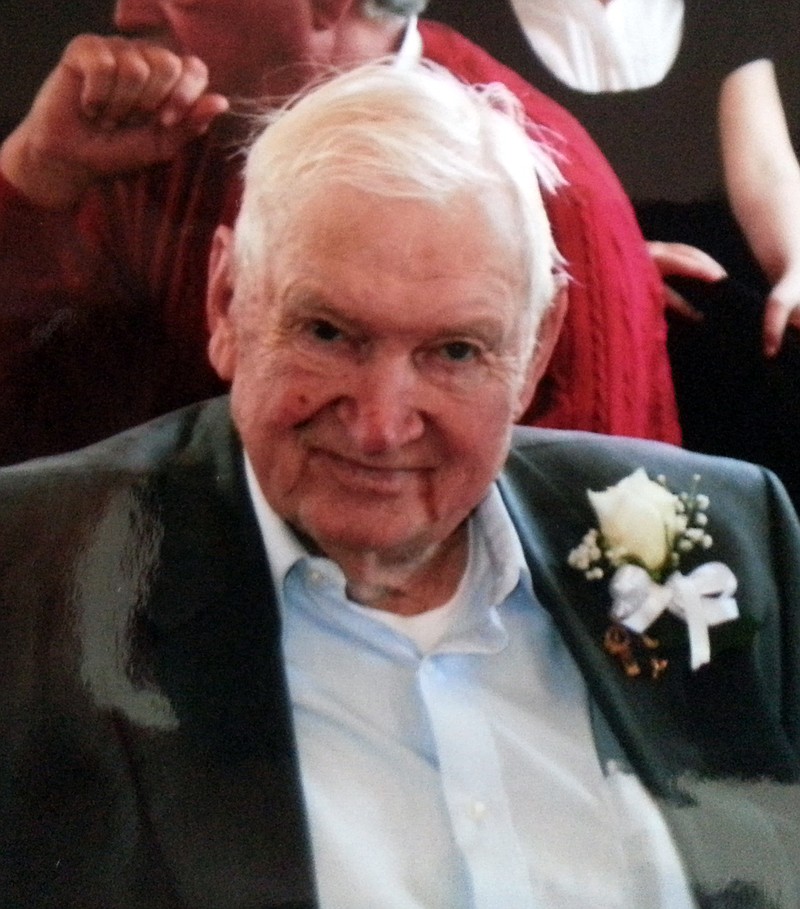A young man coming of age in a rural community during World War II, Cletus Heidbreder was granted a deferment from his local draft board to remain at home and help provide essential services on his family's farm.
But in December 1942, when his deferment came up for its first annual renewal, Heidbreder made the decision to enlist in the Navy out of a sense of responsibility.
"A lot of guys were going to war," said Heidbreder, 93, Lohman, "and I decided if they're all going, I'm going."
Enlisting in the Navy, the young farmer traveled to Great Lakes, Ill., for boot camp and was selected to serve as an armed guard upon completion of his training.
As Heidbreder explained, armed guards worked on Merchant Marine ships and operated guns that defended the vessels while they transported supplies for the war effort to various locations worldwide.
In the spring of 1943, after training on loading and operating the 3-inch guns attached to the ships on which he would serve, he traveled to New Orleans to embark upon what would become the first of six sea missions.
"We loaded supplies and sailed to Boston and then on to England to unload," Heidbreder said. "We had destroyer escorts accompanying us," which, as he noted, resulted in an uneventful journey.
Returning to New Orleans, close to 300 horses and mules were loaded on his ship to transport to American forces serving in India. The animals, bound for service along the Burma Road, were able to carry supplies over rough terrain that would stall much of the existing mechanized equipment.
The shipment, however, was delayed when his ship was torpedoed by a German submarine while traveling in the Gulf of Mexico, resulting in damaged drive shaft bearing and requiring a 3-day dock in Miami, Fla., for repairs.
After a stop at Norfolk, Va., where they joined a convoy, the crew sailed for Calcutta, India, traveling through the Strait of Gibraltar and the Suez Canal. Unloading their cargo, they cruised to Australia to pick up food supplies, and then to San Francisco-a journey totaling 34 days at sea and 29,000 miles.
Yet Heidbreder's adventure was just beginning as he was soon sailing on a Liberty ship loaded with supplies and bound for troops stationed in New Guinea. Upon his arrival, he located his brother, Omar, stationed there with the U.S. Army.
"I hitchhiked up to the jungle where they said my brother's outfit was," Heidbreder said. "When I found him, he gave me a camera that he had; he was worried he'd get in trouble if he was caught with it," he added.
Throughout the remainder of his wartime service, Heidbreder used his brother's camera to take pictures chronicling his own overseas adventures and service.
Returning to San Francisco, his ship was sent to Seattle to pick up supplies, from where he embarked upon the most intense of his journeys, joining a convoy of Liberty ships traveling to New Guinea and then on to the Philippines where they were present for the Battle of Leyte Gulf-the largest naval battle of the war.
"We were there for three months and three days unloading supplies," Heidbreder recalled. "It took us that long to unload between all of the action ... all of the combat."
"There was one time when we didn't leave our guns for three days," he shared. "That is, I believe, the first time the Japanese used Kamikaze pilots."
Heidbreder remembers seeing a Japanese pilot fly by at deck height dressed in full uniform just before crashing his plane into the side of an American cargo ship.
During the battle a bomb struck so closely to the ship, he and his fellow sailors were showered with ocean water from the explosion. Shortly thereafter, a second bomb blew a hole in the ship's deck, narrowly missing the "gun tub" where their shells were stored-a fortuitous circumstance preventing a deadly secondary explosion.
The battle-hardened sailor completed three more missions, sailing a total of 85,000 miles during his time in service, and in Jan. 31, 1946, received his discharge from the Navy.
Smiling, Heidbreder said, "I remember those officers came to me and asked if I was going to stay in, but I told them all I wanted was to just go home."
In 1951, Heidbreder was married to his fiancée, Ethel. In later years, he completed a career with the highway department and worked as a bus driver and monitor for the Jefferson City School District.
A lifelong member of St. John's Lutheran Church in Stringtown, Heidbreder has remained active with the VFW Post 1003, and, with a war-tempered sincerity, explains how his naval experience has helped mold his current perspective.
"Something that I've always believed ... something that the service has given me ... is that you love your church, love America, love everybody.
"But most importantly," he added, "is that you don't ever throw a day away."
Jeremy P. Amick writes on behalf of the Silver Star Families of America.

